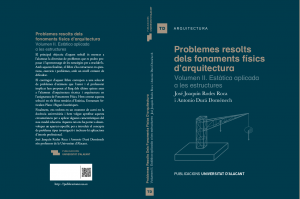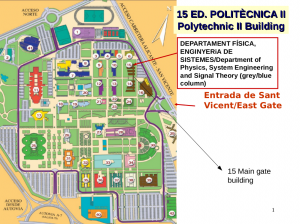Welcome to the course blog of Physics I: Fundamentals of Structures which is a subject of the degree in Technical Architecture. We assume in this course you have taken mathematics and physics before you are starting this course. However, we will not assume that you remember everything you did previously, so do not panic!!!! We will begin with a very brief review of magnitudes, the International System of Units (SI), and vectors. There are two extremely important vectorial magnitudes in your degree, the force and the moment of a force.
We highly recommend to download the course material from this link. Unfortunately, its were written in Catalan/Valencian, but we will try to update this material to English during this semester. All documents are in acrobat format and you can find slides for theoretical classes, exercises both proposed and solved, slides for laboratory sessions, and so on.
The best way to learn physics is solving problems and asking for doubts or understanding physics concepts. We wrote two books about this topic, i.e. problems solved in detail, but the format is prepared to learn yourself. Therefore, we also suggest to download it from this link. You also can check the volume I in this link. Again, these books were written in Catalan/Valencian.

 TUTORIAL HOURS:
TUTORIAL HOURS:
On Thursdays from 11:00 to 15:00 in my office. Feel free to ask for an appointment by Campus Virtual if the timetable is not suit to you.

 or watching this YouTube channel at University of Alicante link (in Spanish too).
or watching this YouTube channel at University of Alicante link (in Spanish too).


